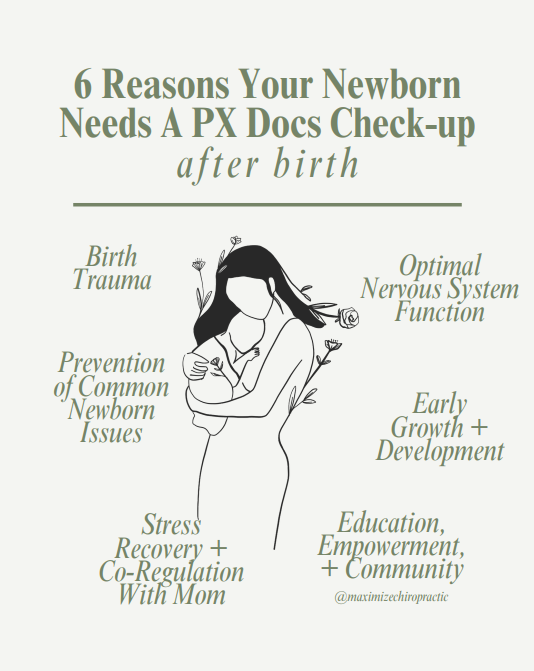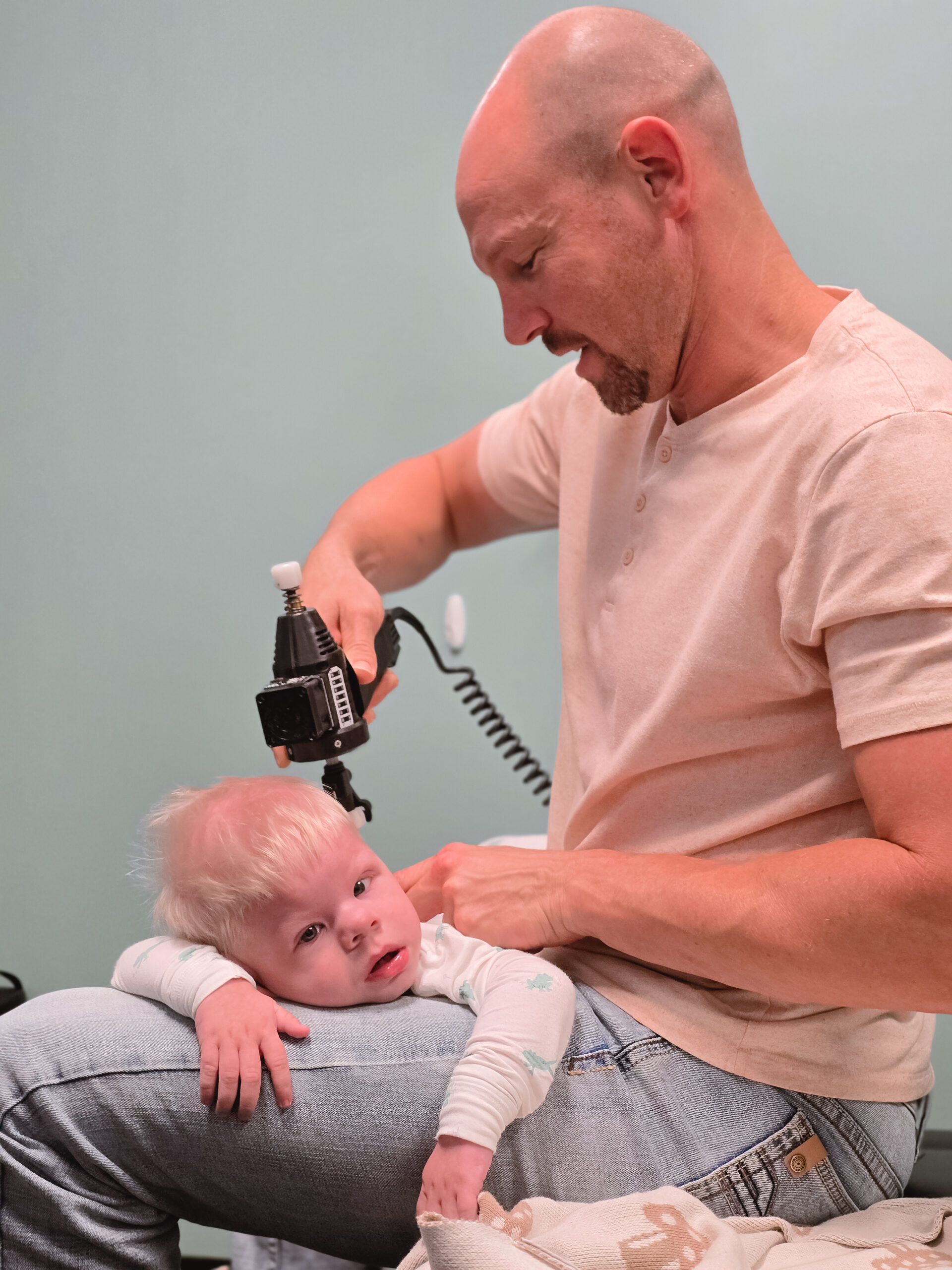As a brand new parent, you want to give your newborn the absolute best start in life. You’re carefully selecting the safest car seat, researching the most nutritious feeding options, and creating the perfect sleep environment. But what many parents don’t realize is that even the most “normal” birth process puts tremendous physical stress on your baby’s delicate body—particularly their brainstem, neck, and nervous system.
Birth Is More Physically Demanding Than We Realize
In the United States, nearly 1 in 3 deliveries now end in C-sections. Beyond that, many births involve other interventions like induction, forceps or vacuum delivery, and various forms of manual assistance. The numbers are quite staggering once you look closely at what’s happening in labor and delivery rooms across developed countries.
But it’s not just birth interventions that can cause concern. Even in natural, intervention-free births, the physical stress of labor and delivery places significant pressure on an infant’s spine and delicate nervous system. This pressure can lead to subtle birth trauma and neurological interference caused by misalignments, also known as subluxation, which may impact your child’s development, nervous system regulation, and overall health from the very beginning.
Understanding Those Challenging First Weeks
Those first few weeks with your newborn can be challenging if you are dealing with constant crying, difficulty nursing, sleep struggles, reflux, or colic. While conventional medicine often dismisses these as “normal baby problems” that they’ll eventually outgrow, these signs may actually be indicating underlying neurological dysfunction that can be addressed.
In a study from the American Osteopathic Association, subluxation or “somatic dysfunction” was found in 99% of healthy newborns. The severity and incidence of these biomechanical challenges within the spine and cranial system increase with longer labor times and the use of birth interventions.
This statistic may seem staggering, especially considering that conventional pediatricians typically have no training in identifying or addressing these issues. Even children born naturally without intervention can benefit massively from an early life chiropractic check-up that looks for subluxation and nervous system dysfunction.
Why Early Detection Matters
The reason it can be beneficial to find subluxation early is that it not only can cause immediate issues with latching, nursing, digestion, sleeping, and soothing—but they are NOT something your child will simply “grow out of.” Due to their location within the nervous system and brainstem regions, they commonly begin to affect various aspects of growth and development as time goes on—most notably interfering with gross motor development, fine motor skills, speech, and other developmental milestones.
The Science Behind Birth-Related Subluxation
Infants Cannot Protect Their Delicate Spine
What makes birth trauma particularly concerning is that newborns have no motor or muscular control developed yet, so they can’t protect themselves during the birth process. This significantly increases the likelihood and severity of neck and brainstem injuries from birth intervention.
Understanding Subluxation in Newborns
Subluxation in your baby’s neurospinal system has three key components:
- Misalignment within the neurospinal system, which can lead to issues like difficulty latching, torticollis (neck tightness), and plagiocephaly (flat spots on the head).
- Fixation and restricted motion. Movement is essential for a developing infant as it provides the brain with proprioception—when subluxation creates fixation, it reduces this vital input to the brain.
- Neurological interference and imbalance, which disrupts proper communication between the brain and body.
The Critical Role of the Brainstem and Upper Neck
All motor tone and development for the entire body is controlled and coordinated by the cerebellum, brainstem, and upper cervical region of the spinal cord. It functions like an “air traffic control” center. When the nerves and muscles of the upper neck and spine are compromised in the first moments of life, all motor development downstream is negatively affected.
And remember—motor development equals brain development in infants.

The Vagus Nerve Connection
The upper neck and brainstem region, the area most affected by birth trauma, houses the vagus nerve—the primary controller of your baby’s parasympathetic “rest, digest, and regulate” nervous system.
When birth trauma creates subluxation in this area, it can significantly disrupt vagus nerve function, leading to dysautonomia (imbalance in the autonomic nervous system). This disruption can affect virtually every major system in your baby’s body: digestive function (colic, reflux, constipation), sleep regulation, immune response, emotional regulation, and developmental milestones.
Common “Normal Baby Problems” That Signal Neurological Dysfunction
What if those common challenges aren’t just phases to endure but actual signs of a nervous system under stress?
- Colic and excessive crying aren’t just “phases” but often manifestations of a stressed nervous system struggling to regulate itself.
- Breastfeeding difficulties frequently stem from upper cervical subluxation affecting the cranial nerves that control sucking, swallowing, and other precise movements.
- Reflux and digestive issues often occur when vagus nerve dysfunction disrupts normal digestive motility.
- Sleep disturbances happen when a subluxated nervous system stuck in sympathetic dominance makes it difficult for babies to relax into deep, restorative sleep.
- Early developmental delays can occur when subluxation restricts normal movement patterns that stimulate proper neurological development.
The Gentle Approach of Pediatric Chiropractic Care
Unlike the adjustments you might picture for adults, newborn adjustments are incredibly gentle—using no more pressure than you would to test the ripeness of a tomato or press on your closed eyelid.
These precise, gentle techniques are specifically designed to release tension patterns and restore proper nervous system communication, allowing your baby’s body to function optimally.
Many practitioners use advanced technology like INSiGHT Scans to identify precise areas of nervous system stress, allowing for highly specific and individualized care plans tailored to your baby’s unique needs.
Setting the Foundation for Lifelong Health
The first year of your baby’s life represents an extraordinary period of development. During this time, their brain will more than double in size and form more than a million new neural connections every second. These early patterns establish the foundation that will influence their health and development for years to come.
By ensuring that your baby’s nervous system is functioning optimally from the very beginning, you’re not just addressing immediate challenges like colic, reflux, or sleep issues—you’re setting them up for a lifetime of improved health, stronger immunity, better regulation, and optimal development.
Taking Proactive Action
Don’t wait until those “normal baby problems” become chronic issues. You can take a proactive approach to your child’s health by scheduling consultation at Maximize Chiropractic with a Neurologically-Focused Pediatric Chiropractor as soon as possible after birth. If you are not local to us, check on the PX Docs directory to find an office near you.
A comprehensive assessment will include a detailed health history, gentle physical examination, and advanced neurological scans to identify areas of nervous system stress.
We know that taking care of your newborn baby can be the most exciting AND nerve-racking time of your life! By considering Neurologically-Focused Chiropractic Care, you’re taking an important step toward giving your baby the best possible start—one where their nervous system can function optimally from day one, allowing them to grow, develop, and thrive as nature intended.

